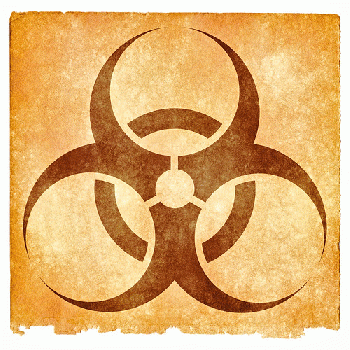As we deal with COVID-19 pandemic, many people wonder what can be done to increase our immunity, to be able to fight off this infection without letting it become serious. Beside the basic rules that CDC advices, more or less verified suggestions are the use of vitamins C, D, and zinc supplements. Nobody knows if these may help to a certain extent, but at reasonable doses probably can't hurt. They at least make us feel better we can take something that might be useful, but hopefully without a sense of false security that would affect social distancing and the other recommended measures.
Having had done my research about what we put in and on our body, I read some medical articles that show that a lot of chemicals we're using every day, in one form or another, can actually decrease our capacity to fight infections.
I came across a statistic that shows that in the low income countries, infections represent four out of five top causes of death. In high income countries however, lower respiratory tract infections remain in the top five causes. This was a big surprise for me.
For the same infectious agent, some individuals develop a mild form, while others a dramatic one. Sure the genes and age have a strong say in these. We clearly learned that smoking contributes to more severe infections, but how about other environmental factors, air, soil and water pollution? How about pesticides? Can they play a role?
White cells of all kinds can be affected more or less by different chemicals. Some pollutants (#1 and #2 below) were banned since 1979, but because they're so persistent in the environment, their effects on immunity were better studied. Moreover, we're still all exposed to them even now and they continue to be present as contaminants in some commonly used products. Some researchers state that "developmental exposure to the environmental agents impacts adult life."
It's not that important to memorize the complicated chemical names as I mention them. What's more important, is to remember where we can come across these as well as some ways we can minimize our exposure nowadays. You'll figure it out as I go through them and see more suggestions at the end.
1. TCDD or dioxin is a by-product of many manufacturing processes (certain herbicides, for instance), and can also be released with municipal and medical waste incineration, chlorine bleaching of paper, and forest fires. Because of a few industrial accidents and their presence in Agent Orange (a pesticide used in Vietnam War), long term effects in humans were studied and still are.
Dioxin, used to poison the Ukrainian politician Viktor Yushchenko in 2004, is also responsible for a form of acne called chloracne. This feature makes me wonder if some cases of terrible acne that doesn't respond even to aggressive treatment, may be linked to this contaminant from the foods they eat or other sources.
2. PCBs (polychlorinated byphenyls), were used in old fluorescent lights (that can leak PCBs if the ballasts fall), old transformers, as well as carbonless paper (not much used nowadays).
Although banned for over 4 decades, because their persistence in the environment, PCBs can still end up un our food (fish, meat, dairy) or drinking water. Fish (from contaminated waters) is a major source, but farmed salmon is too, because of the contaminated fishmeal. PCBs accumulate in the fat that the salmon usually contains. Not frying the fish, but grilling or baking it using a rack in the panwill allow any fatty substances to drip out, can minimize the amounts we end up eating.
Animal feed contributes to the amounts of PCBs detected in meat and dairy, for the same reason: accumulating in fat. The plants take up only minimal amounts of PCBs if the soil is contaminated, that's another reason why meats and dairy from 100% grass fed cows are deemed healthier.
Mayo Clinic says PCBs "can be transferred from mothers to babies causing preterm delivery, low birth weight, and affect immune, nervous end endocrine systems."
(Note: You can view every article as one long page if you sign up as an Advocate Member, or higher).





